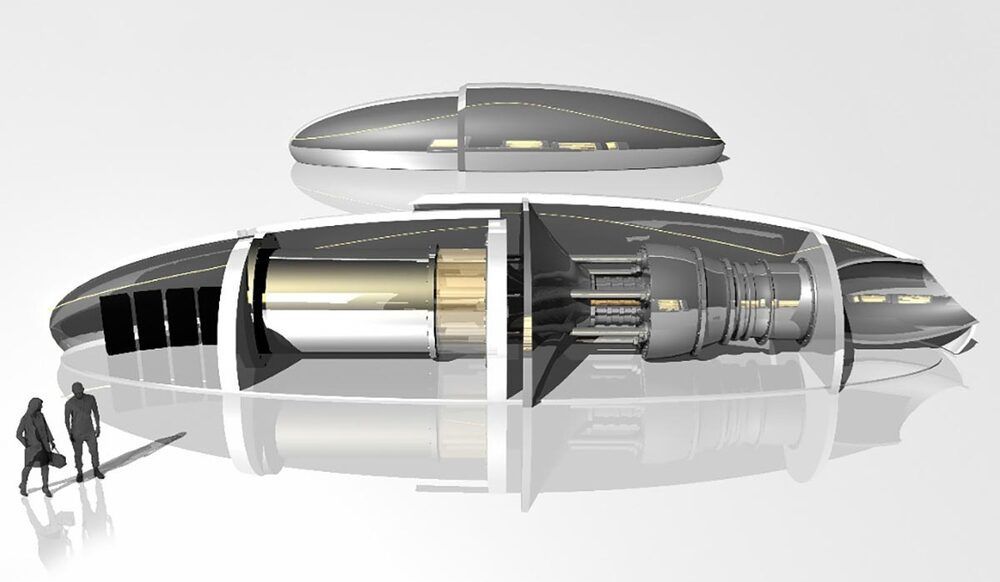A new artificial intelligence method removes the effect of gravity on cosmic images, showing the real shapes of distant galaxies.



Intel wants in on this, and hopes to expand its presence on the continent. It hopes to build in Europe at least one factory for manufacturing and another for advanced packaging, Greg Slater, VP of global regulatory affairs, told the Financial Times over the weekend. France, Germany, Belgium, and the Netherlands are being considered as hosts for these facilities, and Intel is expected to name locations by the end of the year.
Chipzilla is, we’re told, prepared to blow as much as $20bn on these factories over the next decade, with an eye on building up to eight fabs on a 1000-acre site somewhere with the necessary infrastructure around it. Intel teased it could spend up to $100bn during the lifetime of these Euro plants.
“We are well placed to make this an ecosystem-wide project, not just a couple of isolated paths in one member state,” Slater said. “We do believe that this is a project that will benefit Europe at large.”
Artificial intelligence (AI) seems to power all sorts of devices nowadays. Why not a lawn mower, too?

A NASA study has revealed how a ‘wobble’ in the Moon’s orbit could cause devastating flooding in the 2030s.
Research led by the US space agency predicts cities along the country’s coast could see three or four times as many high-tide flood days annually for a decade.
The Moon’s gravitational pull impacts tidal forces on Earth.


“The trend for feeding dogs raw food may be fuelling the spread of antibiotic resistant-bacteria”, the researchers said in a press release for their study, to be presented at the European Congress of Clinical Microbiology & Infectious Diseases.
Separate research to be presented at the same conference found resistance to a last-resort antibiotic may be passing between pet dogs and their owners.
Antibiotic-resistant “superbugs” — which the World Health Organization calls one of the top global threats to public health — usually conjure images of hospital settings.

Boiling lobsters alive may be banned under a new law in the UK designed to protect the welfare rights of animals considered sentient beings. So, are lobsters sentient, do they feel pain, and what does science have to say about the moral quagmire of crustacean agony and cooking pots?
Back in May 2021, the UK government introduced a bill to formally recognize animals as sentient beings. Among the many facets of the bill, it aimed to limit the import of products from trophy hunting, push for fairer space requirements for farm animals, and stop people from owning primates as pets.
However, the bill only covered animals with a backbone and didn’t include any protections for non-vertebrates, which includes octopuses, squid, insects, and crustaceans. The Times reports that ministers are now preparing to back an amendment to the House of Lords, the upper house of the UK Parliament, to extend the legislation to shellfish and cephalopod mollusks. As per the report, this is likely to involve an outright ban on boiling lobsters alive.

Emotion regulation is an essential aspect of mental health and wellbeing. In fact, past studies have found associations between poor emotion regulation and several psychiatric disorders, including bipolar disorder, borderline personality disorder and complex post-traumatic stress disorder (PTSD).
During their everyday life, humans can regulate their negative emotions in different ways, most of which do not require any conscious cognitive engagement. For instance, they might take a bath, step outside for fresh air or listen to music.
Researchers at Radboud University Nijmegen in The Netherlands, the Norwegian University of Science and Technology (NTNU), and University Hospital Aachen, Germany have recently carried out a study aimed at investigating the effects of a short-term musical training on implicit emotion regulation. Their paper, published in BMC Neuroscience, specifically examined whether musical training helped people to reduce the negative emotions elicited by unpleasant or disgusting odors.

Jacopo Buongiorno and others say factory-built microreactors trucked to usage sites could be a safe, efficient option for decarbonizing electricity systems.
We may be on the brink of a new paradigm for nuclear power, a group of nuclear specialists suggested recently in The Bridge, the journal of the National Academy of Engineering. Much as large, expensive, and centralized computers gave way to the widely distributed PCs of today, a new generation of relatively tiny and inexpensive factory-built reactors, designed for autonomous plug-and-play operation similar to plugging in an oversized battery, is on the horizon, they say.
These proposed systems could provide heat for industrial processes or electricity for a military base or a neighborhood, run unattended for five to 10 years, and then be trucked back to the factory for refurbishment. The authors — Jacopo Buongiorno, MIT’s TEPCO Professor of Nuclear Science and Engineering; Robert Frida, a founder of GenH; Steven Aumeier of the Idaho National Laboratory; and Kevin Chilton, retired commander of the U.S. Strategic Command — have dubbed these small power plants “nuclear batteries.” Because of their simplicity of operation, they could play a significant role in decarbonizing the world’s electricity systems to avert catastrophic climate change, the researchers say. MIT News asked Buongiorno to describe his group’s proposal.

The Sverdrup Basin was a Carboniferous to Paleogene depocenter that accumulated over 12 km of sediment from Carboniferous to Paleogene time18 (Fig. 1). From Late Carboniferous to Early Triassic time, the Sverdrup Basin was along the NW margin of Pangea at palaeolatitudes of 35–40°N (ref. 19) (Fig. 1). Until the EPME, the basin was characterised by a central deep basinal area of fine-grained clastic deposition surrounded by a shallow shelf dominated by biogenic carbonate that transitioned in the late Permian to chert formed by shallow water siliceous sponges19. After the EPME, the Sverdrup basin was dominated by clastic-dominated sedimentation18. In this study, we examined the distal deep-water Buchanan Lake section which preserves outstanding Boreal records of the EPME, followed by the biotic recovery in the Early Triassic5. The Buchanan Lake section consists mostly of black shale of the Late Permian Black Stripe Formation and overlying Early Triassic Blind Fiord Formation that preserves characteristic post-extinction fauna20 (Fig. 2).
During the last decade, the Buchanan Lake section has been extensively examined, and the carbon isotope chemostratigraphy, elemental compositions of the shale, and oceanic palaeo-redox changes have been well constrained5, 11, 19, 20, 21, 22, 23, 24, 25, 26 (Fig. 2). The EPME in the Sverdrup Basin is marked by eradication of silica and carbonate producers along with the onset of a significant negative δ13 Corg shift that has been correlated globally with the dated Global Stratotype Section and Point (GSSP) for the Permian-Triassic boundary at Meishan, China, at ~251.9 Ma (refs. 3, 4, 20, 27, 28) (Fig. 2). The palaeo-redox conditions during the deposition of the Late Permian Black Stripe Formation and Early Triassic Blind Fiord Formation evolved from an oxic water column with a strong redoxcline in the sediments to anoxic and then to sulphidic bottom water conditions (Fig. 2).